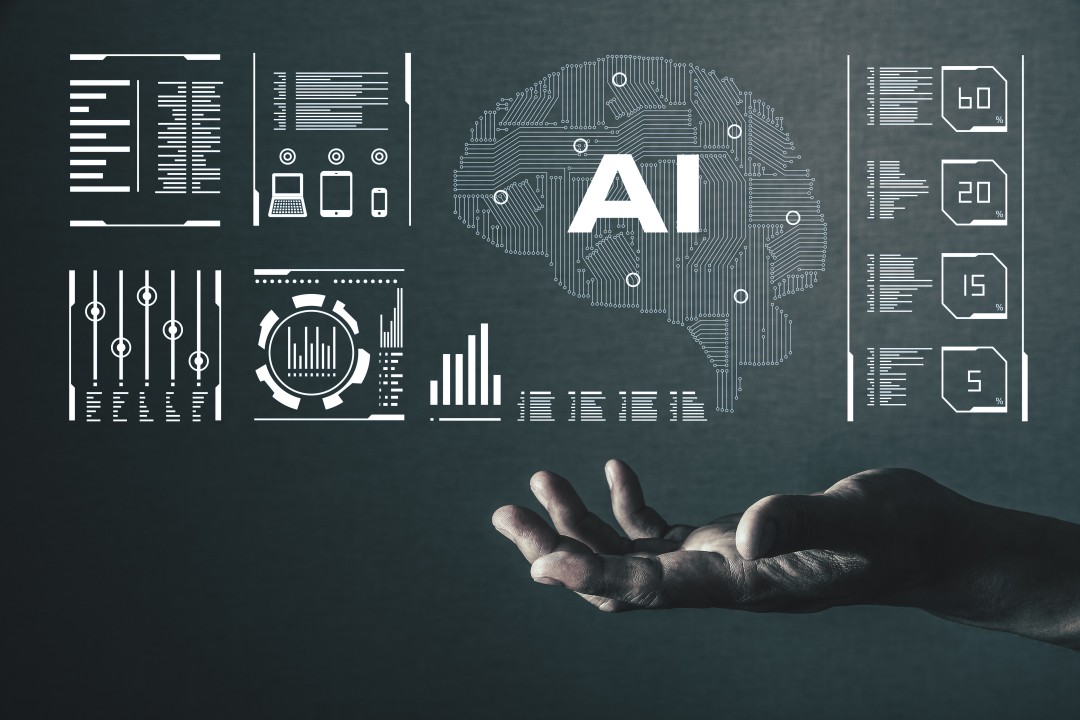Decision support systems emerged in the 1970s to assist with making business decisions based on data rather than intuition, marking the birth of Business Intelligence (BI), a discipline that transforms raw data into actionable insights. BI evolved over the years, and in the 2000s, self-service analytics revolutionized the market. New tools and technologies allowed users to slice and dice data, create interactive dashboards, generate visualizations and reports, and extract valuable insights. However, the exponential growth of data presented challenges with managing and analyzing vast amounts of information. Moreover, there was a shortage of data-literate professionals skilled in handling complex datasets. To address these challenges, AI emerged as a powerful ally to enhance BI capabilities and enable organizations to harness the full potential of their data.
Automating Insights and Enhancing User-Friendliness
One of the main contributions of AI to BI is the automation of insights and the simplification of the analytical process. Traditional BI platforms often require technical expertise to manipulate and interpret complex datasets. However, AI-powered BI tools can leverage machine learning (ML) algorithms to enable non-technical users to interact with data intuitively. These tools can automatically generate visualizations, perform data analysis, and offer insights without requiring users to possess advanced analytical skills. By automating these processes, AI streamlines decision-making and enhances the user experience within BI platforms.
Examples include:
- Customer segmentation – Analyze customer data based on various attributes such as demographics, purchasing behavior, and preferences to segment customers. With this information, businesses can develop targeted marketing messages, product recommendations, and personalized offers.
- Dynamic pricing – Analysis of pricing data, customer segments, and market trends help tailor pricing and offers to specific customer segments, which can enhance customer satisfaction, loyalty, and conversion rates.
- Recommender Systems – ML algorithms can analyze customer preferences and behavior to provide personalized recommendations. In a BI context, this provides relevant cross-selling or upselling opportunities, recommends content or products, or optimizes inventory management.
Forecasting and Predictive Analytics
As data volumes grow, organizations seek more accurate forecasting and predictive capabilities. AI enables BI systems to leverage advanced algorithms, such as machine learning and deep learning, to make more precise forecasts and predictions. By analyzing historical data patterns, identifying trends, and considering external factors, AI-powered BI models can generate forecasts with greater accuracy. These insights assist organizations in making informed decisions and anticipating future challenges.
Examples include:
- Sales forecasting – Forecast future sales by analyzing past sales data, market trends, customer behaviors, and other relevant factors.
- Risk management – Identify anomalies or outliers in large datasets, and detect unusual patterns that may indicate fraud, cybersecurity threats, or system failures. By integrating anomaly detection with BI, organizations can proactively monitor and address potential issues.
- Demand planning – Forecast demand for products and services by studying historical sales data, market trends, and external factors like seasonality or promotions. This information can be used to optimize inventory levels, production schedules, and procurement strategies.
- Churn prediction – Identify customers at high risk of leaving, enabling customers to take proactive measures to retain them.
Harnessing Structured and Unstructured Data
AI empowers BI systems to extract insights from a variety of data sources, including both structured and unstructured data. Traditional BI primarily focused on structured data from databases and spreadsheets.
However, unstructured data, such as social media posts, customer reviews, emails, and documents, contains valuable insights that enhance decision-making. AI algorithms such as natural language processing (NLP) and text analytics enable BI platforms to process unstructured data and extract meaningful information. It empowers business users at all levels to access and interpret data, fostering a data-driven culture within the organization.
Here are some applications of NLP and text analytics:
- Sentiment analysis – Analyze customer feedback, reviews, and social media data to determine the sentiment associated with a particular product, service, or brand. This information can be used to gauge customer satisfaction, identify trends, and make informed business decisions.
- Named entity recognition – NLP can identify and extract named entities such as names, organizations, locations, and dates from unstructured text. It can be useful for tasks such as customer profiling, market research, or trend analysis.
- Text classification – NLP can automatically categorize and classify large volumes of text data, such as emails, support tickets, or survey responses. it enables businesses to organize and prioritize information, detect patterns, and extract actionable insights from unstructured data.
Enhancing Performance
AI functions as the backbone of BI, bolstering its performance and accuracy. By automating repetitive tasks, AI reduces the risk of human error, streamlines workflows, and increases productivity. Additionally, AI algorithms continually learn from data, improving their predictive capabilities over time. As organizations continue to accumulate data, AI-powered BI systems can adapt and provide increasingly accurate insights, enabling businesses to make data-driven decisions confidently. Here are some examples where AI can be used to optimize the business processes for higher efficiency.
- Resource allocation – Machine learning algorithms can be used to predict resource demand patterns based on historical data and external factors. Optimization techniques can then be applied to allocate resources efficiently, such as assigning staff, optimizing inventory levels, or scheduling production to minimize costs while meeting demand.
- Supply chain optimization – Machine learning algorithms can analyze supply chain data, including supplier performance, transportation costs, inventory levels, and demand patterns. Combined with optimization techniques, businesses can optimize supply chain operations, such as determining the optimal inventory levels, identifying the best transportation routes, or optimizing production and distribution schedules.
- Energy consumption optimization – Machine learning models can analyze historical energy consumption data, weather patterns, occupancy rates, and other contextual information to predict energy demand. Optimization algorithms can then determine the optimal energy generation, storage, and distribution strategies to minimize costs and reduce environmental impact.
- Marketing campaign optimization – Machine learning models can analyze customer data, purchase history, demographics, and behavior to predict customer responses to different marketing campaigns or offers. Optimization algorithms can then allocate marketing resources effectively, determine the optimal marketing channels, and personalize marketing campaigns to maximize customer engagement and conversion rates.
Summary
The integration of AI into Business Intelligence (BI) has revolutionized the way organizations extract insights from data. With the exponential growth of data, the increasing demand for real-time insights, and the need to democratize access to valuable insights, AI has become a vital tool in enhancing BI capabilities. By harnessing the power of AI within BI, organizations can fully unlock the potential of their data, enabling informed decision-making that drives sustainable growth and paves the way for lasting success.



